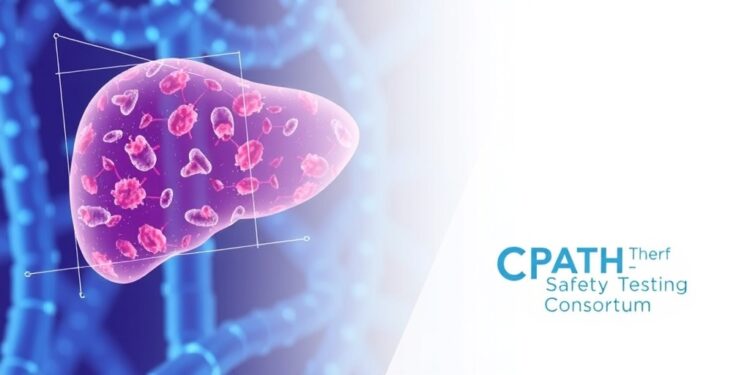The Rise of Glutamate Dehydrogenase as a Liver-Specific Biomarker in Drug Development
In the realm of drug development and clinical diagnostics, the search for more accurate and specific biomarkers for liver injury has been an ongoing quest. In a groundbreaking study, researchers at the Critical Path Institute’s Predictive Safety Testing Consortium have identified glutamate dehydrogenase (GLDH) as a promising candidate to replace older, less specific biomarkers. The urgent need for such advancements in liver injury diagnostics is underscored by the limitations of the currently dominant biomarkers, alanine aminotransferase (ALT) and aspartate aminotransferase (AST). These biomarkers, while widely utilized, are not exclusive to the liver and can be influenced by a variety of factors, leading to potential misdiagnoses.
The current reliance on ALT and AST in both clinical practice and the drug development pipeline raises significant challenges. These enzymes can reflect liver injury but can also increase due to muscle damage or other tissue injuries. This non-specificity is particularly concerning in patient populations with pre-existing muscle conditions or in scenarios involving drug-induced muscle toxicity. As a result, clinicians often face ambiguity in diagnosing liver health based on these markers, which can delay or complicate critical treatment decisions. The introduction of GLDH could potentially resolve many of these issues, offering a tool that is specifically tailored to identifying liver damage.
The findings surrounding GLDH suggest that it performs comparably to ALT in detecting liver injury but remains unaffected by muscle injury. The implications of this discovery are clear: by utilizing GLDH as a biomarker, healthcare providers may achieve a more accurate assessment of liver damage. The research team has rigorously tested GLDH’s sensitivity and specificity, with initial studies revealing promising results. GLDH levels are less likely to be confounded by other tissue injuries, potentially paving the way for clearer clinical decisions.
Published recently in the journal Toxicological Sciences, the study offers comprehensive data on the reference ranges of GLDH within a healthy human population. The research not only confirms the reliability of GLDH as a liver-specific biomarker but also details the kinetics of GLDH in serum. The data indicates that GLDH levels decline faster than ALT after the cessation of liver injury, suggesting that monitoring GLDH could provide valuable insights into the recovery of liver health during therapeutic interventions.
Dr. Jiri Aubrecht, a key figure in the research and an adjunct professor at Georgetown University, emphasized the collaborative effort required to advance biomarker research. The study he first contributed to over a decade ago set the foundation for this more recent work, showing a remarkable evolution in our understanding of liver-specific markers. His acknowledgment of the Critical Path Institute’s support highlights the importance of fostering partnerships between academia and industry to drive innovation in drug safety assessments.
Moreover, the U.S. Food and Drug Administration (FDA) is currently evaluating this research through its Biomarker Qualification Program (BQP). This review process is crucial, as it signifies the potential for GLDH to gain acceptance as a standard liver safety biomarker in drug development and clinical practice. The successful qualification of GLDH would represent a significant step forward in addressing the crucial limitations associated with current biomarkers like ALT.
Mitch McGill, a co-author of the study and an Associate Professor at the University of Arkansas for Medical Sciences, pointed out that the reliance on ALT in clinical trials carries inherent risks. The lack of specificity can lead to misinformed clinical decisions, ultimately impacting patient safety and care. By qualifying GLDH, the research community can take the critical first step in enhancing the accuracy of liver injury detection, paving the way for better management of drug-related liver toxicity.
The importance of this research extends beyond biomarkers; it signifies a developing understanding of liver pathophysiology and its implications in drug development. As pharmaceutical companies strive to improve drug safety while minimizing adverse effects, the adoption of more specific biomarkers like GLDH can significantly enhance the monitoring of liver function. This shift could lead to more effective drug therapies, ultimately benefiting patient outcomes.
Investigating GLDH’s role in liver health necessitates a broader look at liver physiology and the biochemical pathways involved in liver injury. Understanding the mechanisms underlying these processes is critical for the deployment of GLDH in clinical settings. Historical data on liver function assays can provide insight into how this new biomarker fits within the framework of liver diagnostics, helping to elucidate the complex interplay between liver health and drug safety.
As the landscape of drug development continues to evolve, the validation of GLDH serves as a reminder of the ongoing efforts needed to refine diagnostic tools and enhance patient care. Through collaboration and innovation, the scientific community can improve our ability to monitor liver health, ultimately leading to more informed treatment strategies and better patient outcomes.
In conclusion, the proposed use of glutamate dehydrogenase as a more specific biomarker for liver injury represents a promising advancement in the field of clinical medicine and pharmacology. The validation of GLDH could transform the standard practices surrounding liver health monitoring in drug development, creating a pathway towards safer therapeutic interventions. As researchers push forward in their investigations, the integration of GLDH into clinical practices could herald a new era of precision in the diagnosis and management of liver-related conditions.
Subject of Research: People
Article Title: Serum glutamate dehydrogenase activity enables sensitive and specific diagnosis of hepatocellular injury in humans
News Publication Date: November 6, 2024
Web References: Toxicological Sciences
References: DOI: 10.1093/toxsci/kfae143
Image Credits: Not specified
Keywords
Biomarkers, Liver damage, Drug development, Drug safety, Medical tests, Clinical research, Hepatotoxicity, Biochemistry, Pharmacology, Toxicology, Drug targets.




